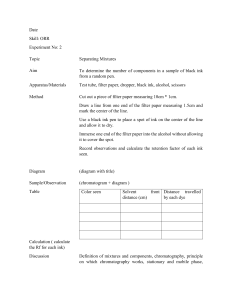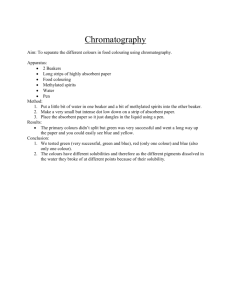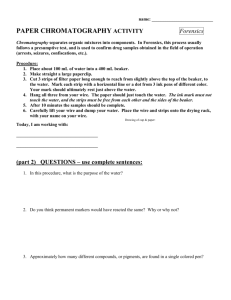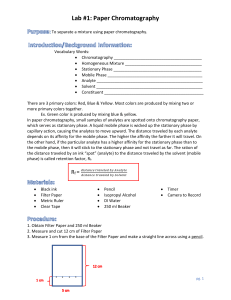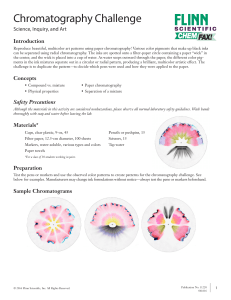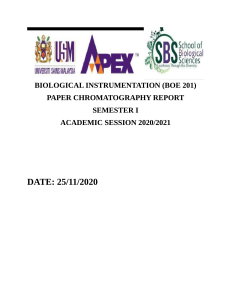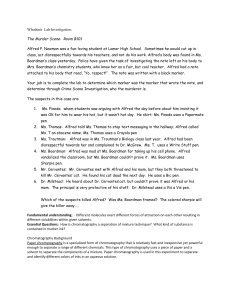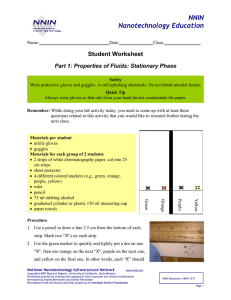A BLACK PEN?
advertisement
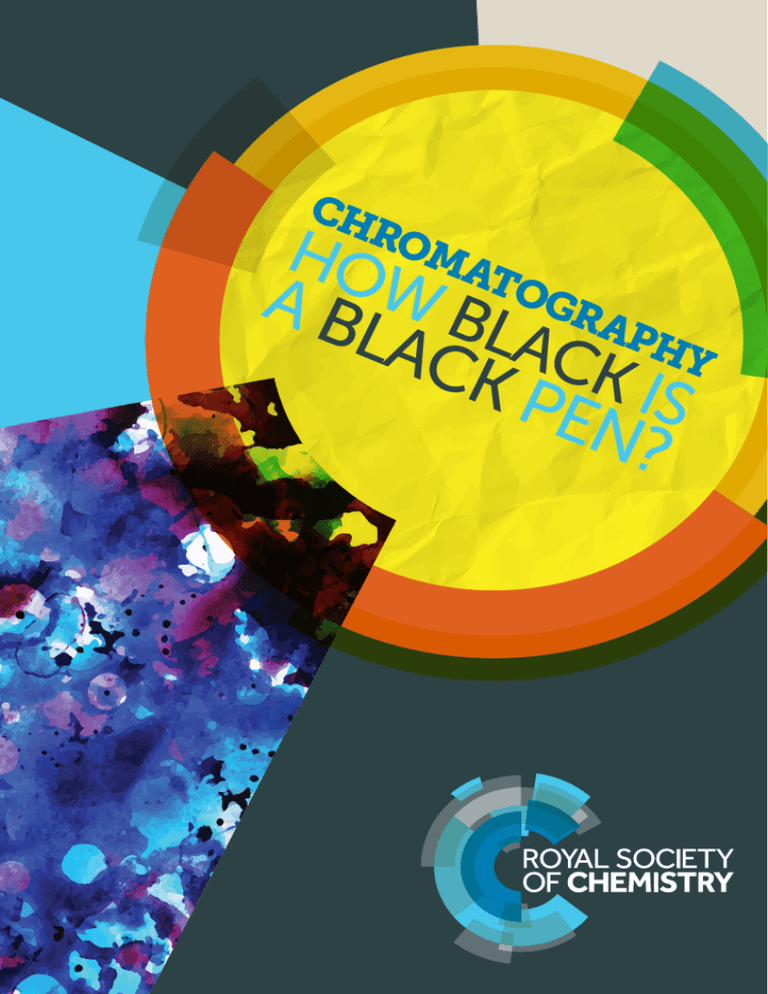
CH RO HO MAT W B OGR LAC APHY AB LAC K P K IS EN ? CHROMATOGRAPHY HOW BLACK IS A BLACK PEN? What you need: Filter paper (e.g. a coffee filter) Plastic or paper bowl Black felt tip pen Cup of cold tap water What to do: 1 Draw a few spots on the filter paper 2 Rest the filter paper on the bowl to catch any drips 3 Dip your finger in the water to get a drop on the end and let it fall onto the spots 4 Watch what happens to the ink – is the black ink really black? 1 2 3 4 How it works: You should find that inside your black dot is a rainbow of colour trying to get out! This technique is called chromatography and it is used to separate mixtures of different molecules. Black ink is often made from a mixture of other colours. The inks dissolve in the water and then move through the paper at different rates, separating out into coloured bands. Why not try this with other colours too? Brown and grey pens often work well and you should find that each colour/ brand of pen has its own unique ‘fingerprint’. Why it’s important: Being able to separate mixtures is really useful. There are lots of different types of chromatography – from simple methods like this, to sophisticated machines like LC-MS which can separate a mixture and measure the mass of the components all at the same time. You will find some form of chromatography being used in virtually every chemistry lab around the world! Teachers – want more ideas for colour-related chemistry practicals and demonstrations? Visit the Learn Chemistry website at http://rsc.li/learn-chemistry and search for ‘colour’ As with all science experiments, make sure you are supervised by a responsible person. And remember to have fun!

